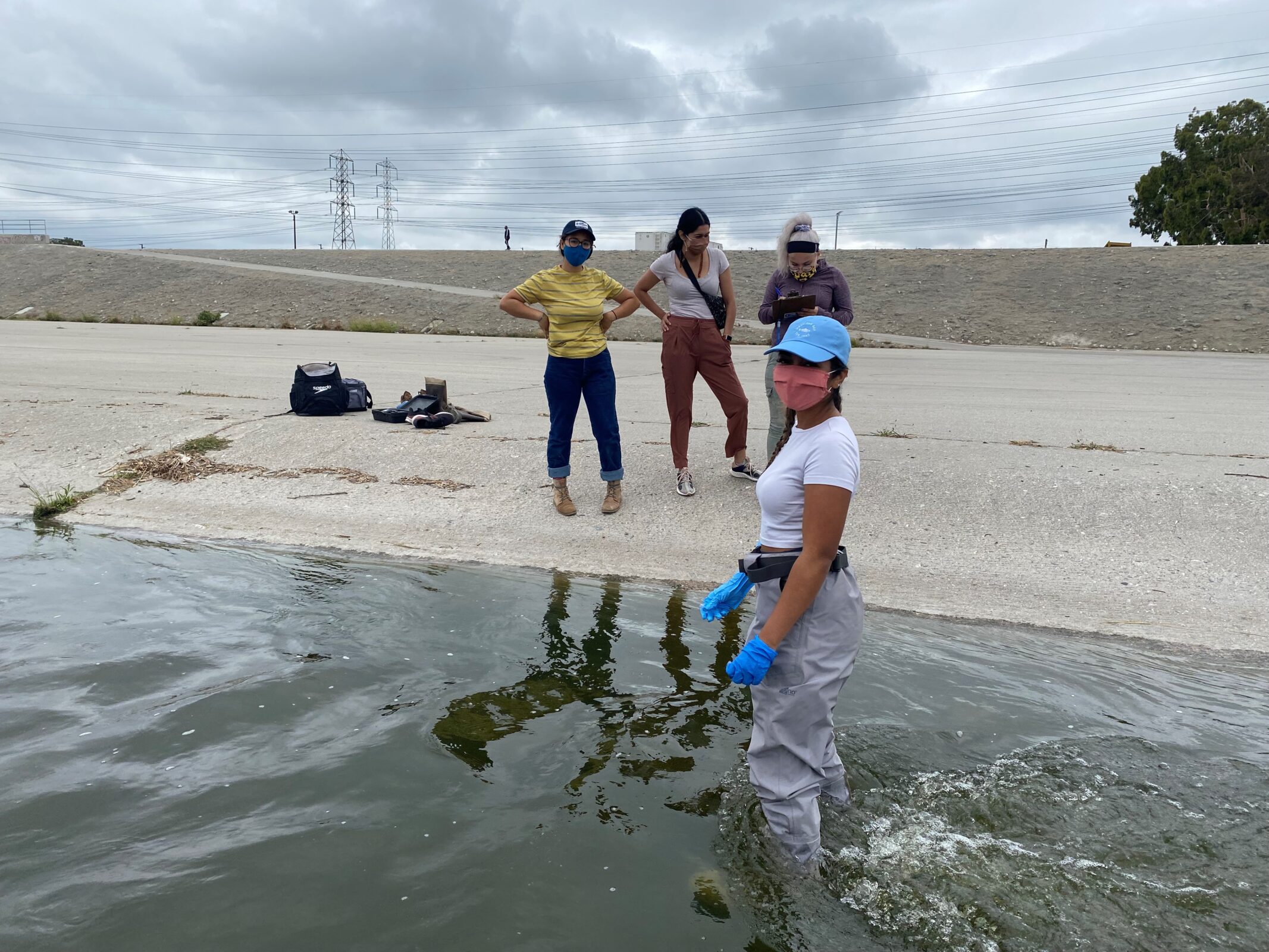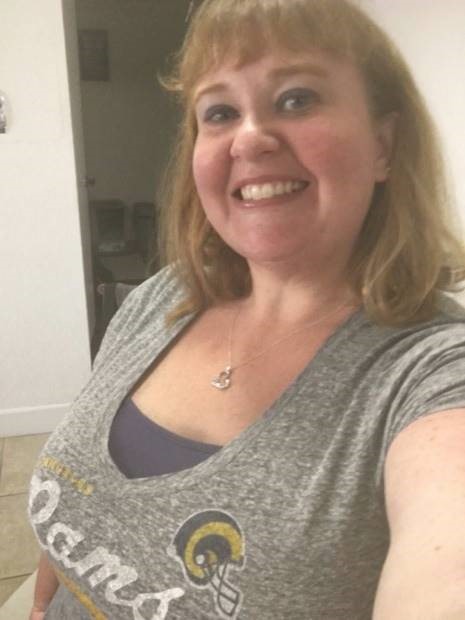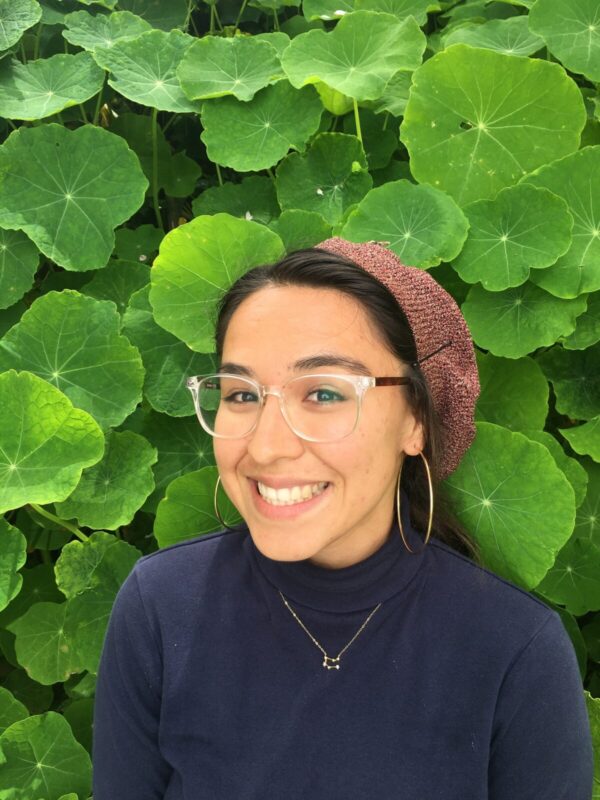Water Quality Highlights in the Lower LA River from 2021

On warmer days when people are spending time outdoors in Los Angeles, Heal the Bay is there too, collecting water samples from rivers, creeks, and streams. Our River Report Card has issued water quality grades for freshwater recreation sites throughout LA County since 2017. The grades are based on levels of bacterial pollution in the water, and help the public make informed decisions about whether it’s safe to swim there. Local college students (our ‘Stream Team’) collect water samples from Malibu Creek State Park and the LA River in the San Fernando Valley and north of Downtown.
In the summer of 2021 we expanded our program to the lower reaches of the LA River, so now our River Report Card covers the entire extent of the LA River! Funding for this expansion came from the Watershed Conservation Authority. We partnered with California State University Long Beach (CSULB) and would like to give a major shout-out and thank you to Dr. Varenka Lorenzi and Dr. Christine Whitcraft from CSULB who dedicated their time and resources to facilitating the program.

This fantastic achievement would not be possible without the hard work of our Lower LA River Stream Team, which is composed of five students from CSULB and Long Beach City College (LBCC).
We asked the students to share their thoughts on the work they did this past summer – read on to hear their voices and what this experience meant to them.
Sarah Valencia

“Throughout my entire experience with the Stream Team I learned so much about the activity surrounding the LA River. So many locals come out to enjoy the River and the space it has to offer. It made me realize how precious the River is to so many hidden communities and local families. Unfortunately, our samples collected from the lower part of the LA River yielded large amounts of E. coli and Enterococcus (which indicates the presence of fecal pollution). The River was not suitable or safe for any kind of in-water activities, so seeing locals try to catch fish or bathe in the water made our work feel needed and long overdue.
I grew up in Bell, California, just about a block from Riverfront Park. I remember hanging out by the River with friends, so I feel connected to the River in that it is part of my community and childhood. Joining the Stream Team helped me look at the LA River through different lenses. I can now see how the River is an integral part of the ecosystem there especially as we move closer to the ocean where the River ends. Animals were always a fun sight. We’d randomly find a snake, turtle, frog, and countless dogs. Each field day was its own new adventure.
I hope to continue my education in environmental science by attending graduate school so that I can take my knowledge and studies into helping watershed conservation and communities. I believe that the work the Stream Team does will prompt legislatures, other conservation groups, and the community to support efforts into watershed conservation and protecting the LA River for all its communities.”
Sarah Kambli

“I was so excited to have the opportunity to work as part of the Stream Team this summer. Originally a Marine Biology major, I switched to Environmental Science & Policy in the fall of 2019 and while I was excited at the new prospect, I wasn’t entirely sure what exactly this field would have in store for me. Cue the Stream Team! When I heard about this opportunity, I was so excited and jumped at the chance to apply, and I was absolutely elated when I got the position. I’ve always felt a connection to Nature, especially water, so to be able to get down into the River and study it was so exciting!
This project meant a lot to me in many ways. Scientifically, I was able to get some hands-on experience by collecting and analyzing samples. I was able to use some of the skills I learned in previous Science classes that, while enjoyable, I really struggled with. So, it really made me feel good to see that I was able to pull from some of that knowledge and put it to practical use, despite my previous difficulties. I gained so much confidence in myself through working both in the field and in the lab, and this experience showed me a potential road that I am excited to continue down after school. I’m still not completely sure what I want to do when I’m finished, but I know I want to work with ocean conservation; having this experience will really help me with that goal in the future.
On a personal level, this project also meant a lot to me. Like a lot of people, COVID has been very difficult for me. My entire family lives over a thousand miles away in the middle of the country, so I felt the forced isolation especially hard. When I joined the Stream Team, though, and got to work with these amazing young women, I felt myself come alive again. The five of us all got along exceptionally well from the start, and we worked seamlessly as a team. Besides amazing teammates, I made four wonderful friends that I foresee being in my life for many years down the road.”
Monet Pedrazzini

“Early morning air carries sounds of sweeping trucks on the 710 that mimic ocean waves, a foreshadowing of the eventual pelagic destiny of the Lower LA River runoff. We, the Stream Team, trudge in our waders and boots while taking note of cyclists and weekly algae bloom, watching dragonflies during the summer, and counting trash bags or shopping carts that decorate the concrete-floored watershed. Each site has its own expression of local flora, fauna, and activity. Families push strollers on the bike trail past the scattered duckweed and litter on the slopes of Riverfront Park’s riparian bank while Audubon Society members stake out at Willow (the furthest downstream site) to view Canadian geese or California terns taking a rest from migration commutes. As a part of Los Angeles history from early colonization to its present physical intertwinement that starts in Canoga Park, the LA River’s broad ecosystem spans time as well as the landscape with understatement. Shooting through downtown LA generally unnoticed and ending in Long Beach, it runs through and by us each day. The myth of nature as other erodes as we collect samples, commuting downstream, amongst the biodiversity and legacy of the LA River. We, as humans, are as much a part of this once wild river that’s laden with society’s trashy fingerprint as it is a part of us, as the watershed cycle flushes away our cityscape toxins like urban kidneys. Our connection is integrated, even interdependent.
Participating in routine, weekly visits cultivated an intimate relationship with each site, allowing us to more acutely observe seasonal shifts and differences in weather or time of day as patterns of the ecosystem. We learned to correlate these fluctuations with our lab analysis, excitedly putting into practice empirical observation along with the scientific method as we discovered the disappointing, but not so surprising, high levels of bacteria present in the River. This was each of our introductions to scientific field and lab work. Our worst fear was to feel intimidated, talked down to, or not smart enough to be there. Being an all-female team with varying abilities and backgrounds felt radically inclusive according to our understanding of the culture of STEM. With Heal the Bay’s encouraging support and example of relearning inclusivity in STEM, we intentionally empowered each other with compassionate accommodation that highlighted each member’s contributing strengths. Learning to practice consistency in standardized data collection and interpretive analysis as well as utilize unfamiliar lab equipment as a team allowed us to be more present, confident, and welcomed in the realm of science, transforming the fearful, projected legacy of competition into collaboration.
These embracing qualities have been so important to each of us as our initiating experience with scientific research. The opportunity to engage with science without feeling judged or insecure not only maintained a wholesome environment but has worked to affirm my own capacity, ability, and confidence to pursue a professional career in the STEM fields. Furthermore, as a Latinx, Long Beach native, relating data specific to my local ecosystems to the overarching narrative of climate change and environmental justice is a priority. Given this, my goal is to utilize my degree to advocate for Indigenous Land reclamation and stewardship in the process of decolonization along with environmental advocacy while continuing to nourish inclusivity in STEM. Working with Heal the Bay on the Lower LA River Stream Team has provided an incredible launching pad of curiosity, partnership, empowerment, and insight into the praxis of scientific pursuits. My experience with the LA River will always be a deep, personal reminder of the poetic resiliency and adaptive character of nature, moving me to remember that nature is not only all around us but more so, we have merely built ourselves around nature.”
Melissa Zelaya

“My time spent learning about the Lower LA River these last few months has been incredibly informative and inspirational. I was lucky to be part of the Stream Team which included a wonderful array of individuals that I learned from each day. Also training under Luke and meeting a community of like-minded individuals has been fuel to my already blazing need to work towards the health and protection of our natural environment.
I discovered that to understand the importance of monitoring the Lower LA River is to understand the importance of all the connecting waterways. The seriousness of a rainfall washing through these connecting channels bringing all the waste of our city to the ocean is one of the reasons it is instrumental in seeking ways we can make better changes. Not only were we able to see firsthand what rainfall does to the River but we were also able to quantify the difference it makes in our data. Monitoring the Lower LA River was challenging at times. Even though it holds the title of a river and is used recreationally, what we noted was a heavily impacted area not held to safe health standards. The qualitative data we recorded revealed that there is movement of birds as well as local activity using this area as recreational pathways. We saw fishes, insects, algae, vegetation, and life in and near the River. Our mission to the River was for the entirety. To advocate for those who cannot speak for themselves and to show the results of our current standing so that we can see positive improvements of the natural aspect of this area.
The direction of my personal and professional life has always been intertwined. As a first generation Latina college student, it was exciting being able to come home and explain to my parents the work I was doing in the River. My passion for my study came from their encouragement and compassion. I want to use my time and voice in ways that can be beneficial to the community and in the protection of the environment. I felt privileged to be able to do work that I loved at this point in my educational career. In addition, knowing that I would be gaining experience working with Heal the Bay who commits their time and resources to public health, climate action and education has been rewarding. I want to continue in this path that has been nothing but fulfilling. In educating others, as others have educated me. To advocate for an equitable future and use my training in ways that are going to help our diverse community flourish. I’ve been able to grow my confidence as well as knowledge of what it means to be a scientist thanks to an encouraging group putting work every day to see a better tomorrow.”
Jasmine Sandoval

“Hi, my name is Jasmine Sandoval and I had an amazing time being a part of the Stream Team this summer/fall! I am currently working on my Bachelor’s in Environmental Science and Policy, minor in Geology, and GIS certificate at Cal State University of Long Beach so this opportunity was right up my alley. During this time, I learned a lot about how to use lab equipment, how to set up, clean up, and perform testing on water samples, and how to take proper samples that would not introduce any bias or obstruct the sample as a whole. I also learned how to properly record data that is being collected! Working with the entire Stream Team has been such a blessing as the colleagues I worked with helped create such a fun, supportive, and respectful work environment. This whole experience has been so meaningful to me as it has helped me see how capable I am as a person, how much I love the field I am getting into, and how much work there is to be done that I can be involved in. I will take everything I learned from this and apply it to my future endeavors and for that I am truly grateful!”
The Stream Team will be back to issuing water quality grades next summer. In the meantime, keep an eye out for our annual River Report Card, which will be released in late spring 2022. Here’s our last report from 2020.


